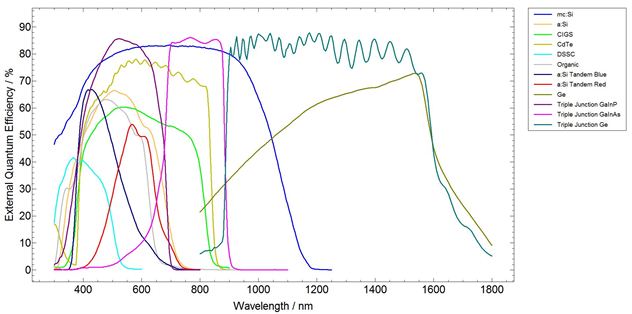Solar Cell Characterisation
In this era of renewable energy and space exploration, harnessing the solar energy is becoming increasingly important. As a result, different material systems are being employed, new designs implemented and systems tailored for use in particular situations.
The PVE300 permits the determination of device spectral responsivity (from which may be determined EQE), and, having performed measurements of sample reflectance (and transmittance where required) the determination of IQE.
A monochromatic probe based on a Bentham TMc300 single monochromator and typically a Xenon/Quartz halogen light source, is launched onto the sample under test, giving coverage over the spectral range 350-2500nm.
The PVE300 is compatible with all types of photovoltaic devices and architectures, including c:Si, mc:Si, a:Si, µ:Si, CdTe, CIGS, CIS, Ge, dye-sensitised, organic/polymer, tandem, multi-junction (2-, 3-, 4-junction and more), quantum well, quantum dots, chalcogenides and perovskites.
The above image depicts such a system, coupling the monochromatic probe to a sample in the test enclosure which also houses a solar bias source.
Core Features
- Direct determination of device spectral response (SR, A W-1)
- Direct determination of device external quantum efficiency (EQE/IPCE, %)
- Chopped, monochromatic probe, 1-10mm diameter
- Light-tight measurement chamber
- 20x20cm temperature controlled vacuum mount
- Use with substrate, superstrate or packaged devices
- Transformer or Amplifier & lock-in based detection
- Device operation in short circuit or voltage biased
- Choice of single or multiple channel solar simulators
- Wide range of operation 300-2500nm
- Calibrated reference Si/Ge detectors
Options
- Integrating sphere-based determination of reflectance/transmittance to yield internal quantum efficiency (IQE, %)
- Motorised x-y stage for device uniformity measurement
- Characterisation of fluorescent materials with addition of second monochromator




